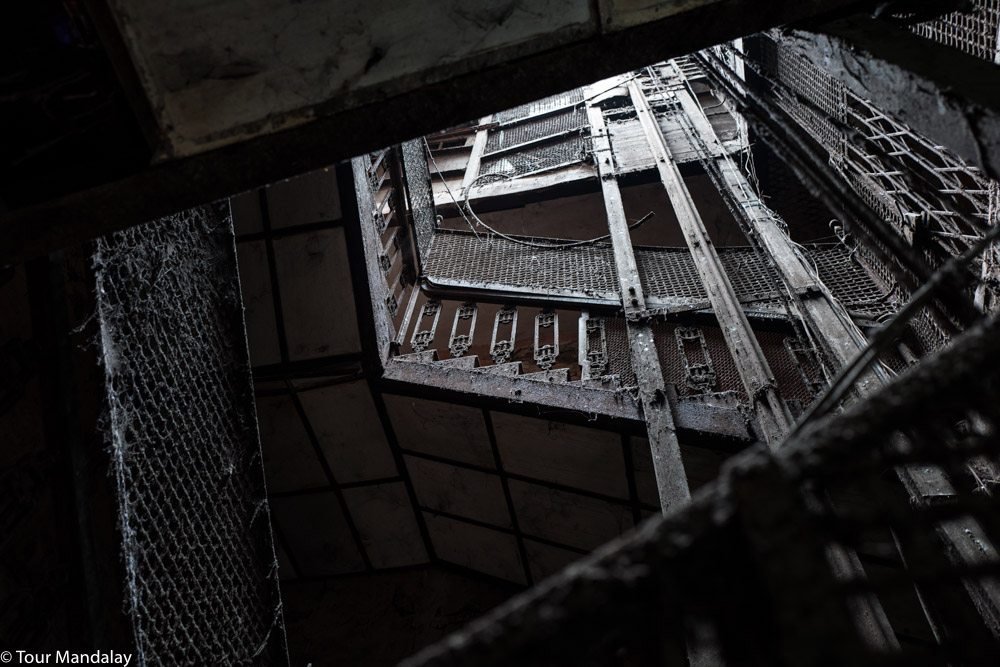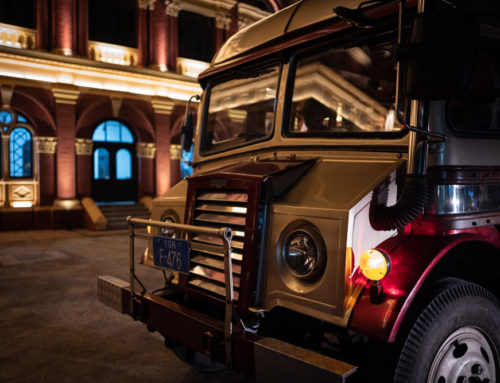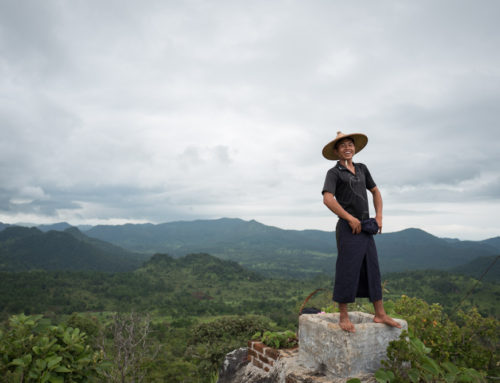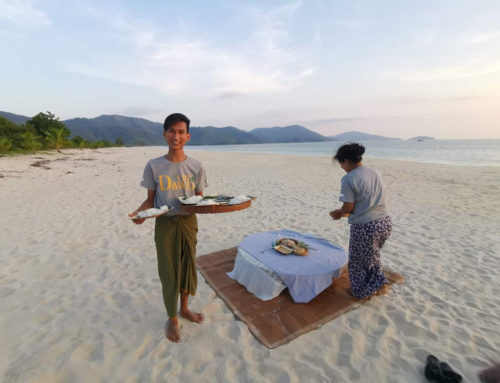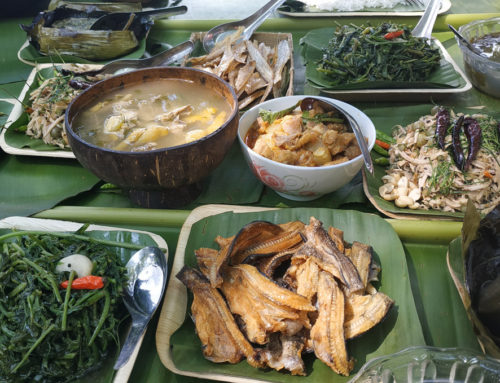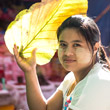RANGOON REVISITED
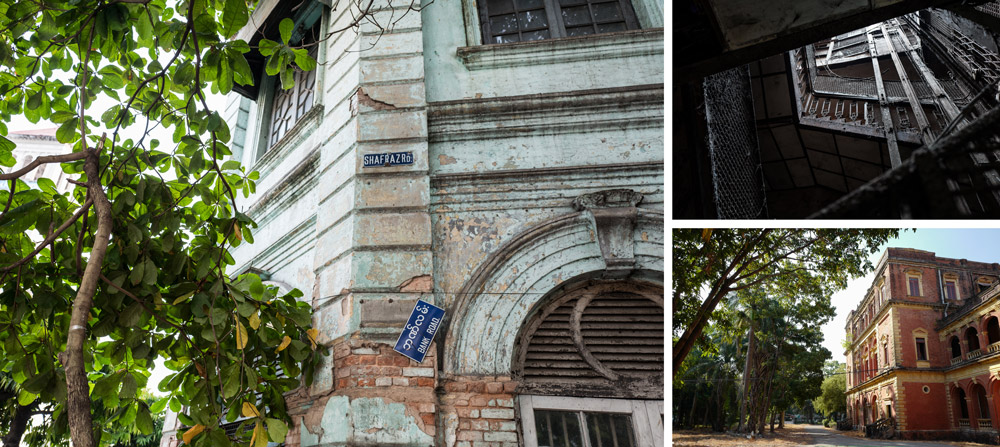
![]() OVERVIEW
OVERVIEW
Regardless of whether you’re looking at it from a hundred-years’ perspective or a decade’s, it’s a challenge keeping up with Myanmar’s ever-evolving commercial capital. The last few years alone have seen buildings that were once strictly off-limits opened to the public, myriad crumbling colonial facades restored by heritage conservation specialists, and once mould-ridden office blocks spruced up thanks to restaurants, bars and social enterprise businesses setting up shop. In what is effectively a revised and up-to-date version of the Yangon colonial walking tour, ‘Rangoon Revisited’ features all the classic sites you’d expect to see and more.
![]() PACE
PACE
Easy-going
![]() TOUR PERIOD
TOUR PERIOD
Full day
![]() HIGHLIGHTS
HIGHLIGHTS
- (Optional) Savour one of Myanmar’s most popular breakfast dishes whilst enjoying an introduction to Burmese tea
- Step foot inside the Secretariat, an important heritage building that’s long been off limits to the public
- Meet with the people behind Yuwaddy Centre, a community centre that provides vocational training and employment to underprivileged women from / in the post conflict areas of Thandaungyi
- Learn about what organisations such as Yangon Heritage Trust and Turquoise Mountain are doing to preserve Yangon’s heritage and make it a more liveable place
- (Optional) Stop for lunch at Gekko, one of the best restored and utilised colonial spaces in town
- From The Strand Hotel to Balthazar’s Building, tick off a number of colonial classics
![]()
ITINERARY IN DETAIL
(Click to read)
(Optional) Skip breakfast at your hotel and head straight to Rangoon Teahouse, the most talked about restaurant in the country. Here, we’ll introduce you to a tastier than it sounds fish broth soup, known locally as mohinga, and the many variations of Burmese tea. With it just being next door, you may also wish to use this opportunity to pop inside Hla Day, an organisation that works with disadvantaged groups and small local businesses to design, develop and sell quality handmade products with a contemporary twist.
From Rangoon Teahouse, or your hotel, we’ll drive a short distance to the Secretariat in time for your privately guided tour. Sometimes referred to as the Ministers’ Building, Myanmar’s grandest colonial relic was once the home and administrative seat of British Burma. Nowadays, it is perhaps remembered less for that and more for General Aung San, his six cabinet members, a cabinet secretary and a bodyguard; on 19th July 1947 a gang of armed men burst into the building and assassinated them during a meeting of the Executive Council. Once inside, we’ll learn more about the reasons behind the targeted assassination, whilst taking time to explore the gutted interior of a colonial gem that’s long been off-limits to the general public.
After exiting the Secretariat, take a short stroll to the Yuwaddy Centre on Bogalay Zay Street. Set up by the Young Women’s Christian Association (YWCA), this is a small social business that provides training and employment to underprivileged women in the post conflict areas of Thandaungyi, Karen State. Products the talented ladies in question produce can be found inside; these range from pots of honey, freshly ground coffee, bags and bracelets. Any money you spend here goes towards an extremely worthwhile cause and whilst there, we’ll also try to arrange a sit down with one of the organisation’s founding members.
Before leaving and with the Yuwaddy Centre’s permission, we’d recommend stepping inside the YWCA building next door. Established in 1902, at a time when Bogalay Zay Street was known as Brooking Street, it would serve as a temporary base for young women keen leave the seclusion of their homes in search of a more independent and fruitful life in Rangoon. Over one hundred years on and it is still one of Myanmar’s leading organisations providing support to disadvantaged individuals across the country. Notable projects include child labour protection, home care for senior citizens, ‘Meals on Wheels’ and numerous vocational training courses.
We’ll then walk a few blocks along Merchant Street, known locally as Konthe-lan, until we reach the Armenian Church of St. John the Baptist. This is Yangon’s oldest church and one of the few historic buildings in the city to have received Yangon Heritage Trust’s (YHT) commemorative blue plaque. Founded by Thant Myint-U, grandson of U Thant (the 3rd Secretary-General of the United Nations), one of the main aims of this organisation is to protect buildings such as the Armenian Church from being demolished in favour of unregulated modern monstrosities; this is taking place at an alarmingly rapid rate as you’ll soon witness for yourself. By awarding these blue plaques, YHT hopes to indefinitely preserve the city’s rich architectural legacy and reward the buildings in question for contributing to the narrative of the city. Perhaps it’ll be a case of too little too late, but there’s no denying that Yangon’s in a much better state now thanks to YHT’s lobbying and their long-term heritage strategy; those keen to learn more about the latter can do so by clicking here.
Yangon’s first Armenian Church was built in 1766, close to the banks of Yangon River. After the British relocated the capital of British Burma from Mawlamyaing to Yangon in 1852, the city was redesigned in a grid-style layout with set quarters being assigned to citizens depending on their ethnicity and cultural tradition (this blatant racial segregation sounds unthinkable now, but it was a common characteristic of British colonial urbanism at that time). Although the land upon which the church now stands was originally gifted by the King of Burma, in gratitude for the Armenian’s many years of loyal service, the British honoured this agreement and permitted it to be factored into the new design. The church was eventually consecrated on January 17th, 1863. Sadly, the last “full” Armenian passed away in 2013, and it is thought that no more than 10 or 20 “part” Armenian families still remain.
Look directly across the road (on Merchant Street) and you’ll notice the derelict Mahatma Ghandi Hall. In the early 1900s, this was the office of the Rangoon Times until it was purchased by Prime Minister U Nu and the Indian Ambassador to Myanmar in 1951. They named it the Mahatma Gandhi Memorial Trust in honour of the late spiritual leader and handed it to a board of trustees to manage. That same group of trustees now wants to demolish the existing structure and replace it with a 12-story apartment block. A dispute between them and YHT is still ongoing.
Immediately next door to the Armenian Church is ‘491-501 Merchant Street’, one of the most interesting examples of an urban regeneration project in South East Asia. After years of neglect, the 491-501 Merchant Street building had fallen into a sorry state of disrepair. In 2016, Turquoise Mountain Trust, a foundation supported by HRH the Prince of Wales, stepped in and delivered Myanmar’s first conservation project completed to an international standard. In the process of doing so, they worked closely with the diverse community within the building to preserve it and trained over 250 people in traditional building skills. Thanks to Turquoise Mountain, the building is once again fit for use and you’ll now find residential apartments, restaurants, tea shops and a hostel all under one roof. Their next project is the much larger ‘Tourist Burma Building’, which they plan to turn into a publicly accessible landmark.
Proceed to walk a few blocks until we reach the Lokanat Building, once named Sofaer’s Building. Designed by Issac Sofaer, a Baghdad-born, Rangoon-educated Jew, this was once one of the most popular business addresses in the city. Since it was constructed in 1906, it has been home to the Bank of Burma, the China Mutual Life Insurance Company, Reuters Telegram Company, a German photographer, a Greek leather merchant and a Filipino hairdresser. On top of that, it’s also where people came to buy their Egyptian cigarettes, Munich beer and penny sweets from England. If that doesn’t highlight the city’s cosmopolitan nature, then we don’t know what will.
Once inside, the first thing you’re likely to notice is the ceramic encaustic floor tiles, a mosaic pattern of green, gold, burnt sienna and lapis lazuli. These were imported from Manchester and installed at the same time as the Lanarkshire Steel Company (Scotland) produced steel beams that support the ceilings. The faded grandeur speaks volumes about what was, but that’s not to say the building’s any less utilised; inside you’ll find the Internal Revenue Department, an art gallery, a tea shop and a small handful of international restaurants.
Before you leave, here’s a couple of random facts. In the first ever episode of his culinary series, Parts Unknown, the late Anthony Bourdain can be found sipping on a cup of tea inside of here whilst reminiscing about the building’s once prestigious past. The voice of Abraham Sofaer, Isaac Sofaer’s son, featured in a couple of episodes of the US cult TV show, Star Trek.
(Optional) Seeing as it’s located inside the Lokanat Building, for lunch we’d recommend eating at Gekko, a Japanese-Korean inspired fusion restaurant with one of the tastiest menus and best-restored colonial interiors around.
Having finished lunch, our next stop will be the River Gallery, a premiere art space located in-between 37th and 38th Street. Home to works by some of the country’s leading contemporary artists, this will present us with an opportunity to discuss the history of expressive art in Myanmar and how its evolved with the relaxation of military censorship.
Cutting through to 38th Street, it’s then just a short walk until we’re standing outside the resplendent Strand Hotel. Acquired by Aviet and Tigran Sarkie in 1901, this has long been regarded as “the finest hostelry east of the Suez” patronised by royalty, nobility and famous names such as George Orwell, Mick Jagger and David Rockefeller. Other patrons have included a team of horses, stabled in the hotel’s bar during the Japanese occupation from 1942 to 1945. Those keen to venture inside will be required to make a purchase, giving you the perfect excuse to enjoy a midday tipple (or two!).
From here it’s then a short walk to the street that’s home to the greatest concentration of crumbling colonial facades, Lower Pansodan (formerly Phayre Street). Here you will find Rander House, the Port Authority tower, the Accountant-General’s Office and the offices of the Irrawaddy Flotilla Company. With part of the Small Cases Court having taken a direct hit by a Japanese bomb, it is remarkable to think that this street still stands mostly intact.
Just across the road is Bank Street, one of the few streets in Yangon that has managed to retain its colonial name. These were changed literally overnight by the State Law & Order Restoration Council (SLORC) in 1988, effectively erasing the city’s fascinating multicultural history overnight. Gone were street names that honoured various nationalities who made Rangoon a prosperous colonial entrepot, some examples being, Saya Mark, Judah Ezekiel, Chin-Tsong and Mohammed Patail.
You’ll find many buildings of interest down this leafy street, with one of our favourites being the Balthazar Building. Built in 1905 by the prosperous Armenian trading company, Balthazar & Son, this is one of the hardest hitting, accessible examples of the city’s architectural plight. Though still an active residence for low-wage government workers and small private businesses, the soot and grime covered interior has become dilapidated in almost every aspect. In spite of it being a shadow of its former self, taking a wander inside provides us with another stark reminder of the city’s potential and why it’s so important to have organisations such as YHT lobbying away in the background; for without them, it is likely the Balthazar Building and others like it would have been razed to the ground years ago. As you exit the building, be sure to mind your step on the heavily weathered original marble tiles that adorn the entrance.
In contrast, immediately opposite stands the former Police Commissioner’s Office / New Law Courts building, which now serves as a swanky five-star hotel. Managed by the highly recommended Rosewood brand, prominent Myanmar lawyers have long opposed this project, pushing for its continued use as a court of law. With severely depleted coffers and more pressing matters to consider, it is unlikely the new government would have been in a position to finance such an ambitious project. Rather than wait for its condition to further deteriorate, surely it is best to handover buildings such as this to private companies that have the required capital and restoration experience (especially if they’re happy to re-open to the public). It will be impossible for the likes of YHT and Turquoise Mountain to accomplish this alone.
Just around the corner from here is Maha Bandula Park, named after General Maha Bandula who fought against the British in the First Anglo-Burmese War (1824–1826). Most people’s eyes tend to gravitate towards the tall pointy monument in the centre, a symbol of Myanmar’s independence from the British in 1948; prior to its erection, a white marble statue of Queen Victoria stood in its place. The architect behind this, Sithu U Tin, also built the City Hall (located at the north end of the park) and Yangon Central Railway Station. From the foot of the monument, it’s possible to enjoy a wide-angle perspective of some architectural delights including the aforementioned City Hall, the Rowe & Co department building (once the Harrods of South East Asia), the High Court and the recently opened Yangon Stock Exchange.
Stealing the limelight from all of these however is one of Myanmar’s most iconic religious monuments, Sule Pagoda. Prior to British colonisation, this sat on an island, connecting with the much smaller ‘old town’ of Yangon via a wooden bridge. Having clearly taken a liking to it, Lt. Alexander Fraser, the person responsible for downtown Rangoon’s original layout, was quick to make it the central point of his new city. Since then, it has silently witnessed the rise and fall of British rule, Japanese occupation, Nay Win’s military coup d’etat, the bloody 8888 uprising and the Saffron Revolution. As the old saying goes, if only walls could talk… (or in this case pagodas).
If time permits, you may wish to carry on walking west (along Maha Bandula Road) to explore the Indian and China quarters. Alternatively, return to your hotel to rest and freshen up before dinner.
![]()
INCLUSIONS
- Transportation to/from hotel in an air-conditioned vehicle
- Secretariat entrance fee
- English speaking tour guide (for other languages, please enquire)
- Drinking water and hand towel
![]()
EXCLUSIONS
- Mohinga and tea at Rangoon Teahouse
- Lunch at Gekko
- Cocktail at The Strand
- Anything not mentioned
![]() NOTES
NOTES
- A supplementary fee may apply on certain days – Tour Mandalay will inform you of this beforehand
- You will be outside for most of the day and it is recommended you that you bring / apply sun cream
- We would recommend wearing light clothes. Your knees will however need to be covered if you intend to go inside any pagodas. It will also be necessary to cover bare shoulders and avoid showing too much skin in general.
![]() PRINT
PRINT
![]() LOCATION
LOCATION

